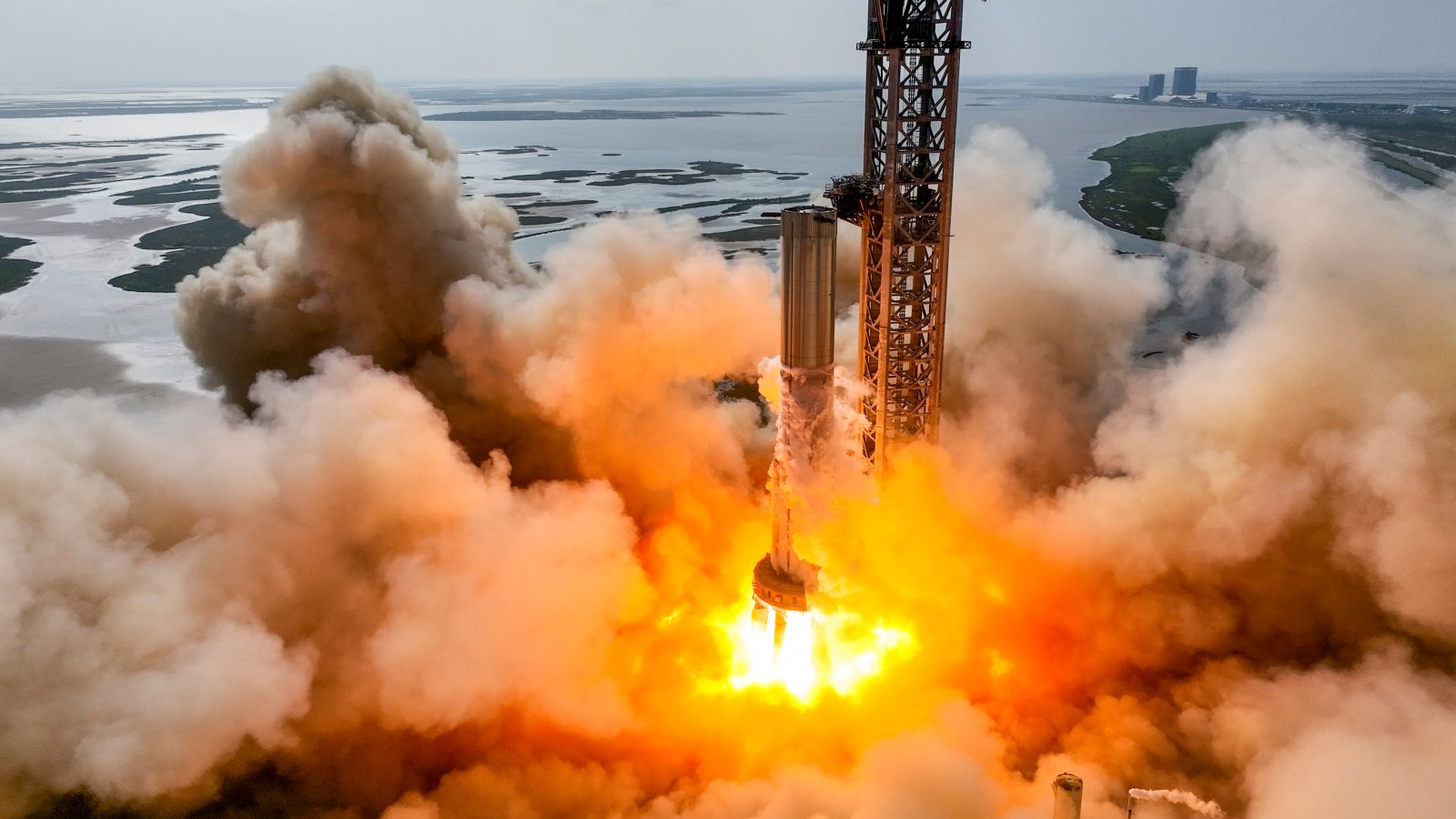
At 2:42 pm ET (1:42 pm CT), SpaceX performed another static fire of their Super Heavy booster. This test was performed using 11 of the 33 Raptor 2 engines. These static fire tests are intended to test the booster and ground support equipment to prove the system’s readiness for a planned orbital flight test and many future missions supporting Starlink and eventually NASA’s Artemis Missions.
The test was performed using Booster 7. This booster’s tank segments were first spotted being built in November of 2021, and completed work on the vehicle’s assembly in late March of 2022. The vehicle underwent multiple tests prior to beginning its static campaign with more notable events in its life than most Super Heavy boosters vehicles built.
The vehicle performed a cryogenic proof, which is a test that fills the vehicle with cryogenic liquid nitrogen to prove the vehicle can handle the temperature extremes of the vehicle’s super-chilled fuel, liquid methane, and liquid oxygen. A cryogenic proof test on April 14th of 2022 led to the vehicle’s liquid methane transfer tube being damaged. Photos showing the transfer tube severely crushed which had to be replaced.
Booster 7 also experienced another anomaly during testing. On July 11th of 2022, the booster underwent a spin-prime test, a test which runs fuel through the engine turbopumps in the same way they would on launch day, just without ignition of the engines. Despite no intention to ignite the engines, on this spin prime test of all 33 Raptor engines, the exhausted fuel vapor below the vehicle was detonated. Booster 7 itself survived the test; however, soon after the test, multiple Raptor 2s were seen being removed from the vehicle.
This most recent firing was the 6th static fire for the Booster 7 vehicle. With its first static fire of a single Raptor 2 engine on August 9th. They performed the second static fire two days later and it was the first long-duration static fire, lasting nearly 20 seconds. The third test on August 31st was reportedly a multi-engine test that lasted roughly 5 seconds in length. The fourth test on September 19th was performed using 7 Raptor 2 engines. The fifth test, occurring on November 14th, was a company record in terms of thrust when 14 Raptor 2 engines were ignited. Generating more thrust than SpaceX’s current heaviest operational rocket, the Falcon Heavy.
Yesterday’s test was the sixth test firing of Booster 7, firing 11 engines per SpaceX’s Twitter feed. Elon Musk reported after the fifth static fire, “Next test is ~20 sec firing with max oxygen fill to test autogenous pressurization, possibly one more static fire, then orbital launch attempt”. Despite the plans, the test lasted only 13 seconds, not the 20 seconds that was initially aimed for. The exact cause for the early shutdown is not currently known. Another point of interest is that this was not the first autogenous test of Booster 7. That was also tested during Booster 7’s second static fire.
Lastly, Elon reported after yesterday’s test that there would be at least one more static fire before SpaceX proceeds with an orbital launch attempt. If plans hold, then the next test is likely to be a full 33-engine static fire. However, nothing is certain about this program’s development. Plans have and continue to frequently change to adapt to new information. Ultimately, if SpaceX does perform a full 33-engine static fire, it will set the record as the strongest liquid-fueled rocket to ever fire (albeit not the strongest rocket motor), surpassing SpaceX’s own Falcon Heavy, NASA’s Saturn V, the Soviet Union’s N1, and even the recently launched, Space Launch System.
FTC: We use income earning auto affiliate links. More.

Comments